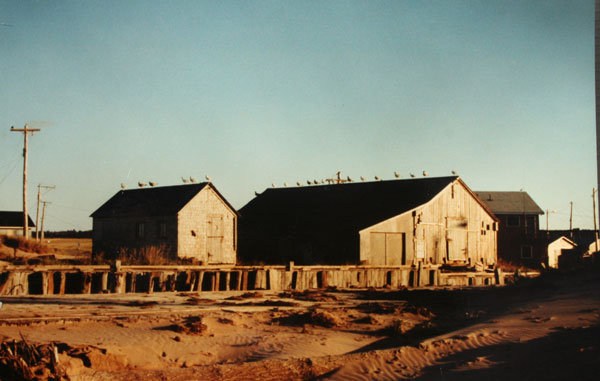Lobster Factories[i]
|
Basin Head Cannery
|
Griffin Factory
|
Johnston's Factory
|
In the late 1800’s and the early 1900’s, there were lobsters factories in almost every small community. There were a total of 12 factories in Eastern Kings alone. These were not big factories the way we think of them today, they were generally quite small and in secluded areas in the countryside. These included, Dr. MacIntyre’s at East Point, Ryan’s in Black Pond, MacLean’s and Tidmarsh both at North Lake, Tidmarsh had a second one in Campbell’s Cove as well as Stern’s. Further northwest was the Bayfield, and Priest Pond factories owned again by the Ryan’s and MacLean’s. Further west, was the Rock Barra plant owned by Joe Dan McIssac, and Big Pond, owned by Angus Dan McIssac.
Due to the large number of plants, many Islanders adopted a factory worker lifestyle. With the market for lobster increasing, there came a major problem: getting the lobster to the buyers. One could not use the traditional methods of preserving fish, which included drying and pickling, for lobster. At this time shipping live lobster was not an option, so in came the time of commercial canneries. The idea of canning lobster started off slow, but eventually it caught on. By 1900 there were 246 canneries on Prince Edward Island.
Even in those days, getting a license was necessary, and application had to be sent then you would have to wait for approval, from the Inspector of Fisheries. Those who had a license had to pay a small fee to renew it each year. The geographic distribution of the lobster factories was directly related to the distribution of the lobster catch. With 246 factories, all competing with each other, came strong competition and therefore a depletion of lobster stalks. In an effort to preserve the industry, the government stopped granting new licenses, around 1905.
Canners paid their onshore workers a flat wage, with their room and board taken into account. The employment was seasonal and the wages were relatively low. The plant workers were receiving 12 cents an hour; still, this was highly sought after work. These canneries were the first waged labour for many women. The majority of women who worked in these production lines were young and not yet married. Despite this, women played a crucial role in the day to day running of the canneries; often the amount of women out numbered that of men. The factory owners and workers lived and worked in very close proximity to one another, creating a strong sense of community and a feeling of belongingness.
The worker's day depended upon each day's catch. Workers would be up until the early morning hours finishing up the day's chores. Sunday, always served as a day of rest no matter what. When the catch was landed and weighed, it was carried by wheel barrow into the factory’s boiler room. The boiler room contained a large furnace and burned only wood. The furnace was attached to the boiler where they would cook the lobster. After leaving the boiler, they would be set to cool, on zinc lined tables. Once they were cool enough to handle, the lobster were sent down an assembly line, where they were broken up, sorted, and shelled. Once the meat was rinsed, it was ready to be packed in cans lined with oiled paper. After being topped up with water, salt, and a drop of ascetic acid, the cans were ready to be sealed, usually with a foot operated soldering machine. After they were stamped and sealed, the cans were placed in boiling sea water for 90 minutes, to be sterilized. Then they would tap a whole in each can to allow steam to escape. The hole would again be sealed, and boiled for another 90 minutes. The finished product was packed in wooden cases and stencilled with the packer’s license number. The cans came in two sizes either a half pound or a pound. It is important to note that at this time imperfectly sealed cans and unsterilization were major issues, causing the meat to spoil and turn black. Major changes and improvements were made in the way they sealed cans over the years, but this did not happen overnight.
Prince Edward Island lobster was shipped all over the world, despite the early packaging challenges. Lobster proved to be a true luxury item. Even through the tough times of WWI, lobster sales flourished, because England and France were devoting more resources to importing food. In 1915, lobster sales exceeded one million dollars for the first time. With the passing of time came more technological advancements. The demand for live fresh lobster and whole lobster also grew. In the latter part of the 1940’s, the canning industry greatly decreased. Fish factories still flourished in these areas, but the old ways of doing things were thrown out for new machines and faster delivery services, to make way for a more demanding and faster moving fishing industry.
Most of the lobster processing plants in Eastern PEI, have closed in recent years. Those still in operation are located in Beach Point, Georgetown and Morell.
.jpg)

.jpg)